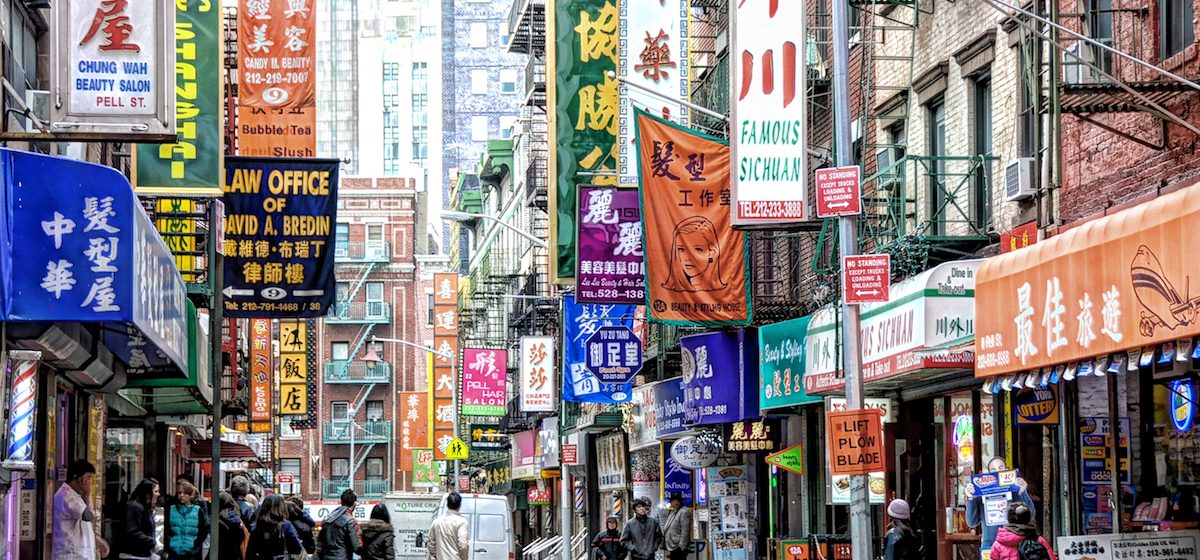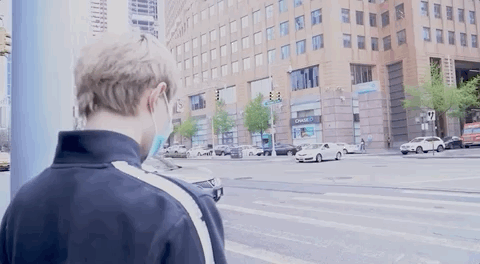
Urban Dream: City Flâneur 2020
Location-based Augmented Reality
Time: Three months (Mar - May 2020)
Tools: Unity, Cinema 4D, Mapbox SDK, AR Kit, Xcode
Scope: Research, Storyboard, Modeling, Programming, User experience
Tools: Unity, Cinema 4D, Mapbox SDK, AR Kit, Xcode
Scope: Research, Storyboard, Modeling, Programming, User experience
ABSTRACT
Urban Dream: City Flâneur is a location-based traveling Augmented Reality(AR) experience that depicts the three different derivatives of Chinese and American culture. This is an AR journey through an immersive world filled with a series of story-based digital sights happening in Chinatown, Manhattan.
(Due to the COVID-19, part of the location-based technology can not be fulfilled. Will make it completed after quarantine.)
Conceptualization
1.Ideation
2.Research
1.Ideation
2.Research
Design
1.Storyboard
2.Prototyping
1.Storyboard
2.Prototyping
Development
1.Programming in Unity
2.Device testing
1.Programming in Unity
2.Device testing
Presentation
1.Onboarding experience
2.Collect feedback from them players
1.Onboarding experience
2.Collect feedback from them players
IDEATION
Flâneur is a cultural observer. He writes books and poetry and takes photographs with the artistic aim of understanding the city, yet he never looks at it from the surface. Instead, he experiences some things in depth." Leo Ou-fan Lee, a Chinese commentator, and the author describe the city Flâneur in the book The Flâneur in the City: Cultural Observations.
The best way to get to know a city is to learn the people's stories in that city. I tend to be more objective by observing and understanding the story behind it, which has always been my creating premise. Augmented Reality, an emerging new media art tool, allows people to understand narrative better. I took this medium to create a portable museum where people have almost unlimited access to the city's culture and stories.
The best way to get to know a city is to learn the people's stories in that city. I tend to be more objective by observing and understanding the story behind it, which has always been my creating premise. Augmented Reality, an emerging new media art tool, allows people to understand narrative better. I took this medium to create a portable museum where people have almost unlimited access to the city's culture and stories.
USER TARGET
- First-generation immigration
- The second-generation immigration
- The international student or international worker

In creating this project, I wandered around Chinatown as Flâneur to explore race, immigration, and assimilation stories. I talked with the people who live there, observed the business that makes money there, and researched the history. I designed three digital AR contents based on the urban data I gleaned during the process. The three main elements I chose to focus on are food, residents' stories, and language.

RESEARCH
&
DEMO
&
DEMO
I've included for you below the summaries of my visits to Chinatown and interviews with residents; to protect the interviewees' privacy, I have not published their personal information.

First Stop - Language
So far, 60% of the people still living in Chinatown are Cantonese speakers. Many of these people do not speak English. However, to integrate into the English-speaking culture, they invented a series of English words using Cantonese pronunciation, which dates back to British colonial Hong Kong. It is an exciting phenomenon derived from the intersection of Chinese and English cultures.
The first stop of the experience is a Soundwalk, where the kinetic fluid is transformed into a variety of Cantonese English notes and word spellings.
The first stop of the experience is a Soundwalk, where the kinetic fluid is transformed into a variety of Cantonese English notes and word spellings.

Second Stop - The story of garbage
This is a story from one of my interviewees, she is “canner,” the people who survive on picking up cans and bottles in the city, she still retains the traditional Chinese belief that only places bought by themselves are called home. After 30 years of renting life in New York, she has been saving up for her dream of buying a home by picking up cans and bottles to sell, no matter for herself or her descendants.
This stop of the experience will take place in One Manhattan Square where the area she was forced to move out because of the establishment of this building. The animation occurs in a virtual world, where garbage attaches to the building and passes.
This stop of the experience will take place in One Manhattan Square where the area she was forced to move out because of the establishment of this building. The animation occurs in a virtual world, where garbage attaches to the building and passes.

Third Stop - Food
This stop is an interactive experience where many Chinese-style plates will be placed all around the corners in Chinatown, and the conveyor belt above will deliver the fortune cookies. The traveler will get recommendations for authentic Chinese food restaurants by clicking on the cookies.
Fortune cookies and orange chicken are significant misunderstandings of Chinese cuisine by Westerners, and they do not appear on Chinese dining tables. After conversing with many restaurant practitioners working in Chinatown, the artist created this food conveyor belt to give travelers recommendations about authentic Chinese food.
Fortune cookies and orange chicken are significant misunderstandings of Chinese cuisine by Westerners, and they do not appear on Chinese dining tables. After conversing with many restaurant practitioners working in Chinatown, the artist created this food conveyor belt to give travelers recommendations about authentic Chinese food.
INFOTRMATION ARCHITECTURE

STORYBOARD
This is a city AR journey; the Map and App can be used as a tool for the user onboard.

MAP &
APP


PRESENTATION
CONCEPTUAL PROTOTYPE




NEXT
.
Due to the epidemic, the location-based technology and the voiceover from my interviewees are not available. After the epidemic, I will finish the entire piece.
- User Testing
- Mapping Contents
- Recording Voice
- Publish
- User Testing
- Mapping Contents
- Recording Voice
- Publish
Thanks for making it here.
